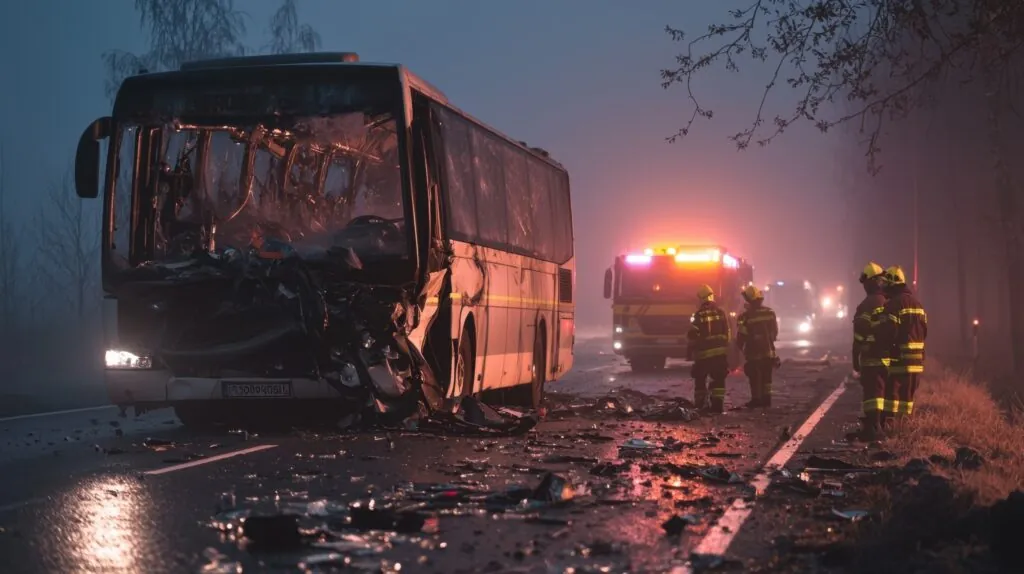Why Public Transit Injuries Matter
Public transportation is a lifeline in cities across the globe. Subways, buses, and trains provide critical access to work, education, and healthcare. However, when safety systems fail or negligence occurs, the outcome can be devastating. Catastrophic injuries sustained on public transit don't just result in physical harm—they can change lives forever.
If you or someone you love has suffered a serious injury in a transit-related accident, this article will walk you through your legal options, rights, and the path to seeking justice and fair compensation.
Defining Catastrophic Transit Injuries
What Makes an Injury “Catastrophic”?
Catastrophic injuries are typically those that cause long-term or permanent disability, prevent someone from working, or significantly impair their ability to live independently. In public transit contexts, these injuries often result from sudden, violent impacts like derailments, crashes, or falls caused by unsafe conditions.
Common Examples of Catastrophic Transit Injuries
Victims may experience a range of severe injuries, including:
- Spinal cord injuries, leading to partial or full paralysis
- Traumatic brain injuries (TBIs), affecting memory, speech, and motor control
- Amputations from being caught in doors, under trains, or due to crushing injuries
- Severe burns from fires or electrical malfunctions
- Compound fractures or internal organ trauma in high-impact crashes
These injuries often require lifelong medical care, assistive devices, rehabilitation, and mental health support.
What Causes Catastrophic Injuries on Public Transportation?
Operator Error and System Failures
Transit accidents are frequently the result of human error or system malfunctions. Subway derailments can happen due to excessive speed or improperly maintained tracks. Buses may crash because drivers are distracted, fatigued, or poorly trained.
Neglected Infrastructure and Poor Maintenance
Station conditions also play a role. Slippery platforms, malfunctioning escalators, or broken elevators can cause serious falls. When transit authorities fail to properly maintain their infrastructure, they may be held responsible for the injuries that result.
A Preventable Problem
What makes these injuries especially tragic is that many of them are entirely preventable. Proper safety oversight and regular maintenance could stop most of these incidents from ever happening.
Determining Who Is Liable for a Transit Injury
Potentially Responsible Parties
When a catastrophic injury occurs, several parties might be liable. These could include:
- Transit authorities (e.g., the MTA, local transit agencies)
- City or municipal governments responsible for infrastructure
- Private contractors hired for repairs or operations
- Vehicle or equipment manufacturers in cases involving defects
Shared or Overlapping Liability
In many cases, liability is shared. For example, a transit authority might be responsible for poor training, while a manufacturer may be liable for a defective train brake. Legal professionals must investigate to determine exactly who is responsible.
Your Legal Rights After a Catastrophic Transit Injury
What You Are Entitled To
As an injured passenger, you have the right to:
- File a personal injury claim against the party or parties at fault
- Receive compensation for medical expenses, lost income, and pain and suffering
- Seek damages for permanent disability or reduced earning potential
- Access legal representation to advocate on your behalf
Don’t Delay: Deadlines Matter
Time is a critical factor. When suing public entities, you often must file a “notice of claim” within 30 to 90 days of the incident. Missing this window can mean losing your right to sue entirely.
How to File a Claim After a Transit Injury
Step 1: Get Medical Help and Document Everything
Seek immediate medical attention. Your health is the top priority—and medical records are essential to proving your claim. Take photos of injuries and the scene, collect witness names, and file a report with the transit authority if possible.
Step 2: File a Notice of Claim
When dealing with a public agency like the MTA or a city-owned bus service, you must file a formal notice of claim, typically within 90 days. This legal document informs the agency of your intent to sue.
Step 3: Hire an Experienced Lawyer
Transit injury cases are legally complex. A specialized attorney will guide you through the process, help file the correct documents, gather expert testimony, and negotiate settlements—or take the case to court if needed.
Types of Compensation You Can Receive
Financial Recovery for Economic Damages
Victims may be entitled to reimbursement for:
- Emergency medical treatment and hospitalization
- Physical therapy and long-term rehabilitation
- Home care services or facility-based care
- Lost wages during recovery and reduced future income
Non-Economic Damages: Pain and Suffering
These damages cover the emotional toll of the injury, including:
- Physical pain
- Emotional distress or PTSD
- Loss of companionship or enjoyment of life
The most severe injuries—such as those resulting in permanent disability or requiring 24/7 care—often result in multi-million-dollar settlements or jury verdicts.
Legal Challenges in Suing Transit Authorities
1. Special Protections for Government Entities
Suing a government entity can be difficult due to legal doctrines like sovereign immunity. These protections can shield transit authorities from lawsuits unless specific procedures are followed.
2. Tight Filing Deadlines and Legal Complexity
Deadlines for filing claims are often much shorter than in private injury cases. Victims who wait too long or make filing errors may lose their legal rights entirely.
3. The Importance of Legal Representation
Transit authorities are backed by government-funded legal teams. To counter their defense, you need an attorney who understands public transportation law and has experience dealing with government immunity rules.
Real-Life Case Studies Show What’s Possible
Case Study 1: Subway Derailment Victim Awarded $5.8 Million
In a high-profile case, a commuter suffered a spinal cord injury during a subway derailment caused by neglected track maintenance. The transit authority was found liable, and the victim received a multi-million-dollar settlement to cover long-term medical care and lost earnings.
Case Study 2: Bus Collision Leads to $3.2 Million Settlement
An elderly bus passenger sustained a traumatic brain injury when the driver ran a red light. The investigation revealed the driver had a record of past violations. A legal claim resulted in a substantial financial award.
These cases demonstrate that successful outcomes are achievable—especially with the right legal support.
Why You Need a Transit Injury Lawyer
Specialized Knowledge Is Essential
Transit injury claims are some of the most legally demanding personal injury cases. A qualified attorney will know how to:
- Handle government-specific legal procedures
- Secure expert testimony to prove negligence
- Fight insurance adjusters and government attorneys
- Calculate the full value of your medical, emotional, and financial losses
Don’t Go Through It Alone
Without a skilled advocate, it’s easy to be overwhelmed by paperwork, deadlines, and complex legal arguments. A dedicated transit injury lawyer gives you the best chance of securing the compensation you need to recover and move forward.
Frequently Asked Questions (FAQ)
What should I do immediately after being injured in a public transportation accident?
If you've been seriously injured in a transit accident, your first priority should be seeking immediate medical attention. Even if your injuries don't seem critical at the time, internal or traumatic injuries can develop later. Once your medical condition is stable, document everything you can—take photos, get the names and contact details of any witnesses, save hospital records, and, if possible, file an incident report with the transit agency. It’s also crucial to contact an experienced personal injury attorney quickly, as there are strict deadlines for filing legal claims, especially when suing a government entity.
Can I sue a city or transit authority for my injuries?
Yes, you can file a personal injury claim against a transit authority or city government if your injuries were caused by negligence. However, public entities are protected by a legal principle known as "sovereign immunity," which means you must follow specific rules and timelines. Most jurisdictions require that you submit a formal notice of claim within a limited window—often just 30 to 90 days from the date of the accident. Failing to file on time may prevent you from pursuing any legal action. This makes it essential to consult with an attorney who is familiar with transit law and government liability.
What types of compensation am I eligible for?
Victims of catastrophic transit injuries may be entitled to both economic and non-economic damages. Economic compensation includes medical expenses, rehabilitation costs, lost wages, future loss of earning capacity, and the cost of any necessary accommodations such as wheelchair-accessible housing or vehicles. Non-economic damages cover pain and suffering, emotional trauma, loss of enjoyment of life, and other impacts on your quality of living. If your case involves especially egregious negligence, punitive damages may also be awarded in some jurisdictions.
How much is my case worth?
The value of a catastrophic injury claim depends on several factors, including the severity of the injury, how it affects your ability to work and live independently, and whether you’ll need ongoing medical care. Additional considerations include the degree of negligence involved and the strength of the evidence linking the accident to the responsible party. Cases involving permanent disability, paralysis, traumatic brain injuries, or amputations often result in high-value settlements or jury awards, sometimes reaching into the millions of dollars. An attorney can evaluate your case and give you a clearer picture of its potential worth after reviewing the facts.
Do I need a lawyer to handle my transit injury claim?
While it is technically possible to file a claim without legal representation, doing so is highly discouraged in transit injury cases. These cases often involve complex legal procedures, government immunity laws, and aggressive defense teams representing public entities. A qualified personal injury attorney with experience in transit accidents will help you navigate filing deadlines, collect and preserve evidence, work with expert witnesses, negotiate settlements, and litigate your case in court if necessary. Without a lawyer, you risk missing crucial deadlines or accepting an inadequate settlement offer.
Contact Fulginiti Law Today
Catastrophic injuries caused by public transportation accidents can change everything. Medical bills add up. Jobs are lost. Families are overwhelmed. But you do not have to face this battle alone.
If you or someone you love has been seriously injured on a bus, subway, or train, you may be entitled to significant compensation. However, the window to act is short and the legal path is complex.
Contact Fulginiti Law today to review your case, protect your rights, and begin the process of securing justice and financial relief. Your future, your healing, and your peace of mind depend on it.



